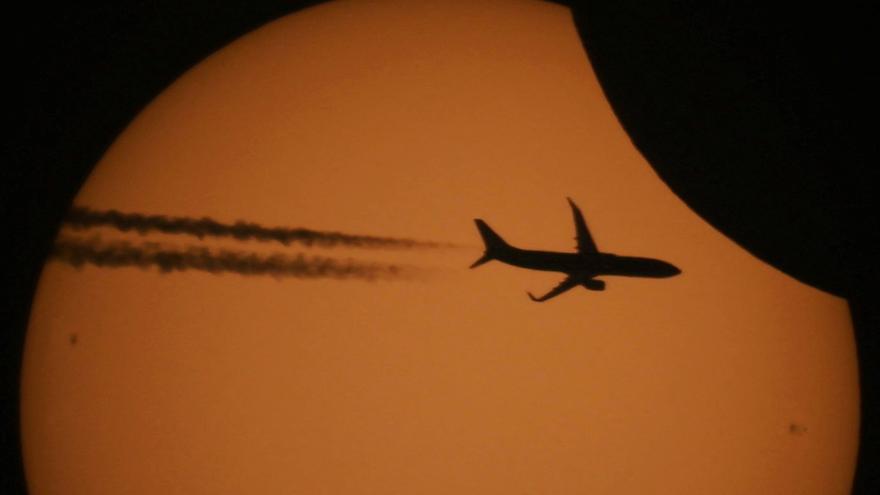
Part of the world will contemplate this Saturday one of the most striking astronomical phenomena that occur in the sky: a solar eclipse. Canary Islands You will be able to enjoy this show, although only in part.
As reported by the National Geographic Institute (IGN), during the evening of this October 14 This episode will be seen partially and with a very low magnitude in the Archipelago, and also not in all the Islands.
In fact Only the islands of the western province and Gran Canaria will have the possibility of experiencing this partial solar eclipse. This means that it will barely be noticeable due to the Islands’ own situation on the globe.
And the time in which this astronomical phenomenon occurs It coincides with the first moments of sunset, around 7:30 p.m., which prevents the population of the Islands from being able to observe how the Sun sets in all its fullness.
The next solar eclipses
Spain in general and The Canary Islands in particular are not very lucky when it comes to total solar eclipses, although yes when it comes to this phenomenon in a partial way. So much so that it has been less than a year since the last one: October 25, 2022.
And we’ll just have to wait a few months for the next one. since it will take place on April 4, 2024, which will also be visible from the Archipelago with very low magnitude. A year later, on March 29, 2025, another partial solar eclipse will be recorded that will be visible throughout the country.
As for the solar eclipses in all their splendor that can be seen from national territory, we will have to wait a little longer, although several of them will be linked. The first will be on August 12, 2026, followed by another on August 2 of the following year. Shortly after, on January 26, 2028, an annular eclipse can be seen.
What is a solar eclipse?
According to the IGN, between 4 and 7 eclipses occur a year, including those of the Sun and the Moon. Normally, a solar eclipse and a lunar eclipse go hand in hand, that is, one half-moon occurs after the other. so every year there are at least two solar eclipses and two lunar eclipses.
Throughout this century there will be 223 solar eclipses, 68 of them will be total, 72 null, 7 mixed (annular/total) and 76 penumbra (partial). Likewise, there will be 230 lunar eclipses, 85 of them total, 58 partial and 87 penumbral. In the case of the solar eclipse this October 14, It will be visible as annul in America.
Recommendations for observation
- Never the Sun must be observed directly, with the naked eye or with sunglasses. During a partial eclipse, the Sun is never completely covered by the Moon and therefore looking at it without safe and adequate protection can damage your eyes, just as it would on any day when there is no eclipse.
-
Nor should the Sun be observed with devices (cameras, videos) or instruments (telescopes, binoculars) that are not prepared for it and have the corresponding solar filters. Nor should it be observed with filters not approved for safe observation of the Sun.
-
The Sun can be observed without any danger by seeing its projected image on some type of screen located in the shade. For example, the image obtained on a wall or ceiling with a small flat mirror covered entirely with paper in which a hole less than 1 cm in diameter has been cut. Do not look at the image of the Sun in the mirror, look only at the projected image.
-
The Sun can be observed safely through filters commonly called eclipse glasses. They must be approved by the European Community for solar observation (opacity index 5 or greater) and must be used following the instructions printed on them. They must be in perfect condition. Do not walk while using them, preferably remain seated. Do not take them off until you have looked away from the Sun. They should not be used with optical devices, although they can be worn over regular prescription glasses.
-
It is not recommended to use optical instruments except by professionals or experts with recognized experience in solar observation. Sun filters that screw onto the eyepiece should not be used, as they reach a high temperature and can break. If necessary, filters should be placed in front of the lens.
















